Physical Address
304 North Cardinal St.
Dorchester Center, MA 02124
Correct large epicanthic folds with a Mustardé double Z -plasty ( 18.1 ). Smaller folds may be corrected with the simpler Y - V plasty ( 18.2 ). In congenital telecanthus the medial canthal tendons are longer than normal, causing lengthening of the distance between the inner canthi. The normal intercanthal distance is approximately half the interpupillary distance. To correct congenital telecanthus the medial canthal tendons must be shortened and refixed to the side of the nose ideally in the region of the posterior lacrimal crest. If the bony anatomy is normal fix the tendons to the periosteum posterior to the original tendon insertion ( 18.1e ) or to the posterior lacrimal crest periosteum. If surgery to the bones is needed to correct a congenital deformity or the effects of trauma, fix the tendon with a transnasal wire ( 18.3 ) or a miniplate or screw attached to the adjacent intact bone.
This technique may be used to correct epicanthic folds and/or telecanthus. In telecanthus the eyes (and orbits) are in a normal position. The correction of epicanthic folds with telecanthus is illustrated but the technique may be used for either alone. In any midfacial congenital abnormality look for and correct any underlying bony craniofacial anomaly before surgery to the soft tissues.
Mustardé's ‘flying man’ must first be marked on the skin of the inner canthi. It is helpful to have a small protractor to measure the angles. A simple one can be made from paper on the operating table.
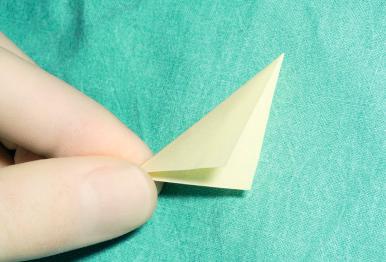
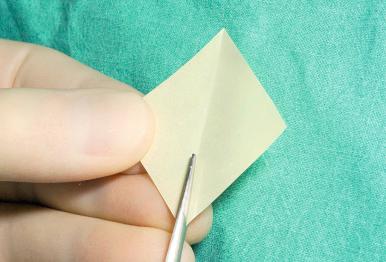
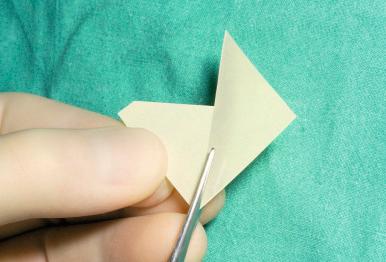
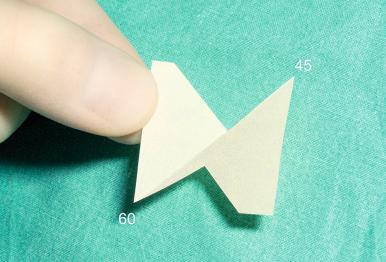
Mark the site of the intended medial canthus (A in Diag. 18.1a ) on each side. The distance between the marks should be half the interpupillary distance. If there is no telecanthus each mark will lie directly over the existing canthus but on the anterior face of the epicanthic fold. If telecanthus is present each mark will lie medial to the existing canthus.
Pull the skin toward the midline to obliterate each epicanthic fold in turn and mark the site of the existing canthus (B). Join the two marks, A and B (see Diag. 18.1a ). Bisect the line and draw two further lines, 2 mm shorter than A–B and at 60 degrees to A–B (angles b and c). From their ends draw lines of the same length at 45 degrees (angles a and d). Finally draw two lines of the same length from B close to the upper and lower lid margins.
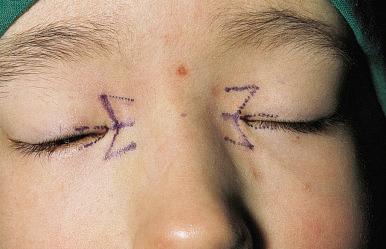
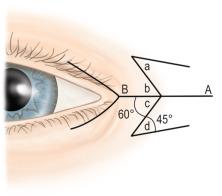
To correct telecanthus, if present, cut the medial canthal tendon taking care not to damage the underlying lacrimal apparatus which may be identified with lacrimal probes. Pass both ends of a double-armed 4/0 or 5/0 nonabsorbable suture from posterior to anterior through the lateral, cut part of the tendon close to the medial canthus. Pass the needles through the original insertion of the medial canthal tendon. Begin just posterior to the insertion and pass the needles forward through the periosteum and the insertion and tie them anteriorly. This ensures that the medial canthus is not pulled anteriorly.
An alternative method of fixation medially is to identify the posterior lacrimal crest by dissecting just inferior to the lacrimal drainage apparatus. Pass the sutures through the periosteum (see Fig. 7.8d ) instead of the original medial canthal tendon attachment. This pulls the medial canthus further posteriorly but it places the lacrimal canaliculi at greater risk.
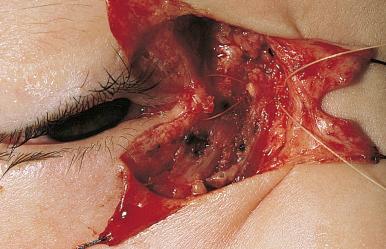
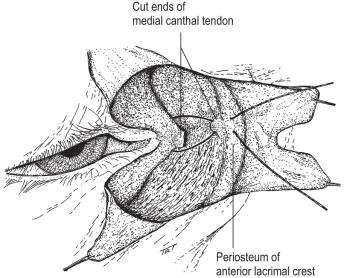
Transpose the flaps a and b, and c and d (see Diag. 18.1b ). It may be necessary to trim the flaps slightly to achieve a comfortable fit but be careful not to trim too much. Close the skin with 7/0 or 8/0 absorbable sutures. A 6/0 or 7/0 nonabsorbable suture may be used in an adult and removed after 5 days (see also 9.7B pre , post ).
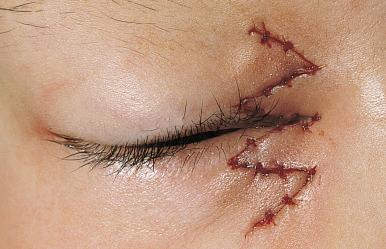
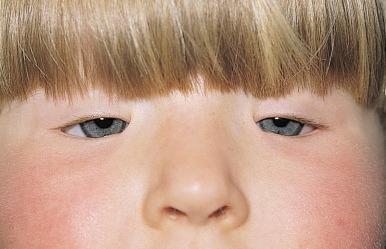
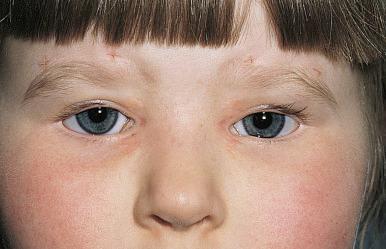
The scars are usually rather obvious for several months but in time they soften and blend well into the surrounding skin.
Undercorrection of the telecanthus or late drift of the canthi laterally may be corrected with a transnasal wire ( 18.3 ) if not used primarily.
If the epicanthic folds are small this technique may be used instead of a double Z -plasty.
Mark the intended site of the new medial canthus (A on Diag. 18.2a ) and the existing medial canthus (B). Join the marks. From B draw lines equal in length to A–B close to the upper and lower lid margins.
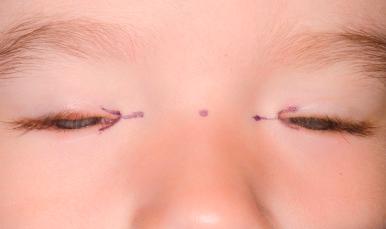
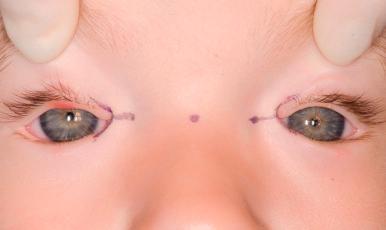
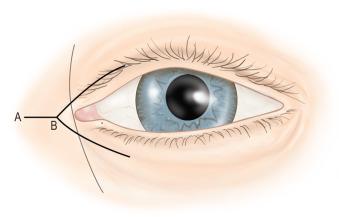
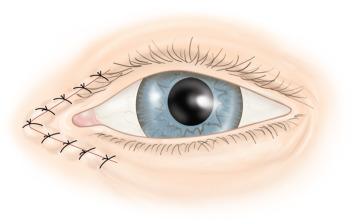
Remove excess subcutaneous tissue (see 18.1d ) to expose the medial canthal tendon. Shorten the tendon as previously described.
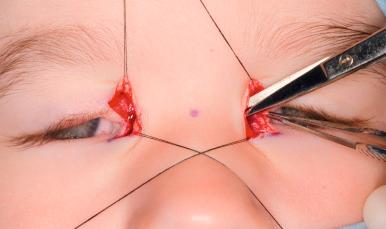
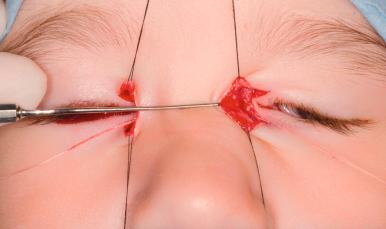


Become a Clinical Tree membership for Full access and enjoy Unlimited articles
If you are a member. Log in here